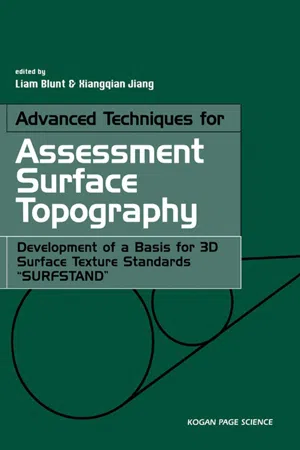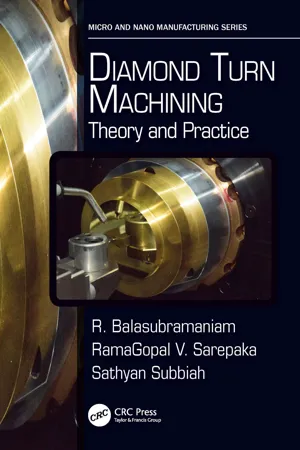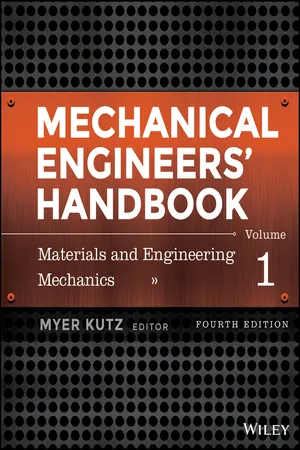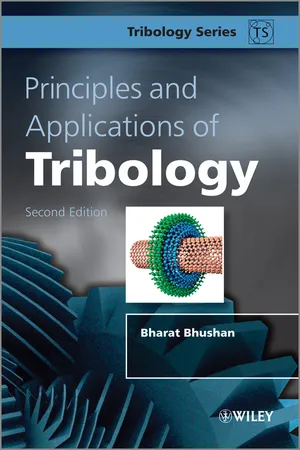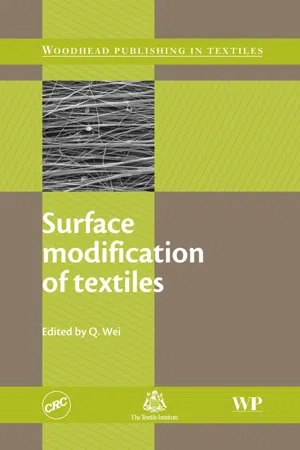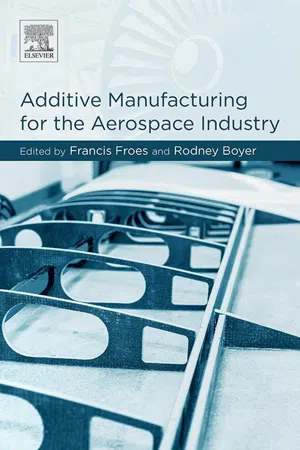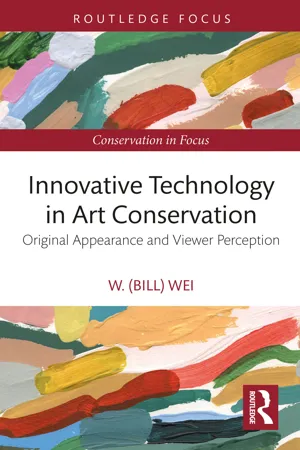Technology & Engineering
Surface Texture Measurement
Surface texture measurement refers to the process of quantifying the topography of a material's surface. This involves assessing characteristics such as roughness, waviness, and lay to ensure the quality and performance of the material. Various techniques, including contact and non-contact methods, are used to measure surface texture, providing valuable data for manufacturing, engineering, and quality control processes.
Written by Perlego with AI-assistance
Related key terms
Related key terms
1 of 4
Related key terms
1 of 3
10 Key excerpts on "Surface Texture Measurement"
- eBook - ePub
Tribology for Engineers
A Practical Guide
- J. Paulo Davim, J Paulo Davim(Authors)
- 2011(Publication Date)
- Woodhead Publishing(Publisher)
1Surface topography
P. Sahoo, Jadavpur University, IndiaAbstract:
This chapter discusses the approaches to solid surface topography characterization including the surface layers, roughness parameters and statistical aspects. The multiscale characterization of surface topography in terms of fractal analysis, Fourier transform and wavelet transformation is also considered. The measurement techniques for surface roughness evaluation are discussed in terms of surface profilometry, optical methods and electron microscopy including the advanced techniques like scanning tunnelling microscopy and atomic force microscopy.Keywords surface layers roughness parameters multiscale characterization measurement techniques1.1 Introduction
Surface interactions are dependent both on the contacting materials and the shape of the surface. The shape of the surface of an engineering material is a function of both its production process and the nature of the parent material (Bhushan, 1996 ; Thomas, 1982 ; Whitehouse, 1994 ). When studied carefully on a very fine scale, all solid surfaces are found to be rough, the roughness being characterized by asperities of varying amplitudes and spacing. The distribution of the asperities are found to be directional when the finishing process is direction dependent, such as turning, milling, etc., and homogeneous for a non-directional finishing process like lapping, electro-polishing, etc. For the study of tribological behaviour it is essential to know the methods of measuring and describing the surface shape in general and the surface roughness in particular. The surface texture may include (a) roughness (nano- and micro-roughness), (b) waviness (macro-roughness), (c) lay and (d) flaw. Figure 1.1 - eBook - ePub
Advanced Techniques for Assessment Surface Topography
Development of a Basis for 3D Surface Texture Standards "Surfstand"
- Liam Blunt, Xiang Jiang(Authors)
- 2003(Publication Date)
- Butterworth-Heinemann(Publisher)
Therefore engineers have concentrated on measuring the surface roughness as both a means of quality assurance and as a means of inferring functional performance. The geometrical form of any surface is usually referred to as the surface texture. Conventionally the texture is made up of features defined as roughness, waviness and form (Figure 1.3). Traditionally, when the surface texture is quantitatively measured it is only the roughness that is analysed and the waviness and form elements are mechanically, electrically or digitally filtered out from the recorded data. Figure 1.3 Roughness, waviness and form of an engineering surface [ 3 ] The difference between the roughness, waviness and form characteristics of the surface texture is based on the surface wavelength or peak to peak spacing. The great problem with these conventional definitions is that the point at which roughness becomes waviness (cut off) is arbitrary and is usually related to the manufacturing process from which the surface derived or from the intended function of the workpiece. For example, what would be considered as roughness on an automobile axle would be considered waviness of form error on a watch spindle [ 3 ]. As a rule roughness can be considered as being produced by the method of manufacture rather than the machine, and constitutes tool or grit marks and is usually of a periodic nature. On a finer scale there is tearing of material, as a result of built up edge formation and tool tip irregularities. Waviness is usually attributed to an individual machine, for example an unbalanced grinding wheel, tool feed irregularities and general chatter vibrations. Form errors are usually caused by a lack of rigidity of the workpiece during the machining operation allowing it to flex or bend. Slide way undulation can also cause form error. Strains in the material, surface induced trough heating or excessive surface residual stress can cause flexure and form error - eBook - ePub
Diamond Turn Machining
Theory and Practice
- R. Balasubramaniam, RamaGopal V. Sarepaka, Sathyan Subbiah(Authors)
- 2017(Publication Date)
- CRC Press(Publisher)
It is to be noted that both waviness and roughness can be controlled by the condition and quality of the tooling. Both can be managed by operator’s skills and functional requirements of the components. Apart from the spatial wavelengths, the frequencies and the magnitudes of the deviations from the baseline also play a major role in the quantification of surface texture. A large number of surface texture parametres have been introduced by the precision machining and metrology community. There are more than 100 parametres, which are used to express the texture [ 60 ]. Putting a number to the surface texture is a task that needs to be handled with some caution and foresight. As mentioned earlier, the process of machining, the method of measurement and the application of the precision surface will decide on how to express the texture and which parametres need to be considered. Since these parametres bring all the surface data into a single value, great care must be taken in applying and interpreting them. To understand the quantified nature of a precision machined surface texture, it is advisable to be familiarised with the meanings of the surface texture parametres to be introduced hereafter. The discussion on surface texture parametres should include the genesis, usage, popularity and prevalence of the terminology of surface parametres and attributes - eBook - ePub
Tribology
Friction and Wear of Engineering Materials
- Ian Hutchings, Philip Shipway(Authors)
- 2017(Publication Date)
- Butterworth-Heinemann(Publisher)
When studied on a sufficiently fine scale, all solid surfaces are found to be uneven. Ultimately, the surface irregularities of the smoothest possible surfaces will be on the scale of individual atoms or molecules; for example, carefully cleaved specimens of the mineral mica can be truly smooth on an atomic scale over areas of several square centimetres. However, the surfaces of even the most highly polished engineering components show irregularities appreciably larger than atomic dimensions, and many different methods have been employed to study their topography. Some involve examination of the surface by electron or light microscopy or by other optical methods, while others use the contact of a fine stylus, or electrical or thermal measurements, or rely on the leakage of a fluid between the surface and an opposing plane. Perhaps the highest resolution can be achieved by the technique of atomic force microscopy (AFM), which can resolve individual atoms, but for most engineering surfaces less sensitive methods are adequate to study their topography.In this chapter we shall see how surface roughness is measured, and then examine what happens when two surfaces are placed in contact and a load is applied.2.2 Measurement of Surface Topography
The topography of a surface can be represented by a dataset that contains the co-ordinates of points which lie on the surface. However, to resolve the features properly that make up the topography of the surface, the distance between neighbouring measurement points needs to be significantly smaller than the size of those features. Methods are required that allow the co-ordinates of points on the surface to be appropriately measured and recorded.Stylus profilometry and atomic force microscopy are both techniques in which the co-ordinates of points on a surface are measured by interactions with a probe; the co-ordinates of individual points are measured sequentially, which limits the speed at which measurements can be recorded. The surface topography is described by a dataset describing those co-ordinates, either along a line or across an area. In contact profilometry, a fine stylus is dragged smoothly and steadily across the surface under examination. The position of the stylus in the plane of the surface is recorded (usually via the movement actuation system) and the vertical position of the stylus is monitored via a transducer. The co-ordinates of points regularly spaced along a line are recorded. To record a dataset which takes data from an area of the surface (rather than just a line across the surface), individual profiles can simply be recorded along a series of parallel lines. AFM uses a much finer stylus on a flexible cantilever, with a piezo actuator commonly being employed to maintain a constant force between the surface and the stylus tip itself (an attractive force is maintained in non-contact mode and a repulsive force in contact mode). With AFM, surface co-ordinates can be measured to a much greater accuracy, but the principles of measuring line profiles or surface topography are the same as for stylus profilometry. - eBook - ePub
- Bernard J. Hamrock, Steven R. Schmid, Bo O. Jacobson(Authors)
- 2004(Publication Date)
- CRC Press(Publisher)
Since fluid film lubrication is concerned with the lubrication between solids separated by small film thicknesses, it is essential that the physical nature of the solid's surface topography be understood. To obtain this understanding, this chapter investigated surface measurement hardware. The contact method of stylus measurement is based on transforming the vertical motion of the stylus tip as it traverses a surface into an electrical analog voltage. The main limitation of this approach is the finite size of the stylus tip, which distorts the surface profile (broadening peaks and narrowing valleys). Atomic force microscopy allows more surface roughness measurement with higher resolution than profilometry. The following noncontacting measurement devices were presented.- Laser interferometers that move a lens in order to maintain focus on a sample surface. The laser can be focused at different locations in order to obtain a three-dimensional surface profile.
- Pneumatic devices measure the airflow when a finely finished head is placed on the surface and indicate changes in surface roughness.
- Optical devices use the intensity of reflected laser light to define the surface texture.
- Electron microscopic devices produce images when electrons are incident on the specimen.
- Mean, or M system, based on selecting the mean line as the centroid of the profile. The area above this line equals the area below this line.
- Least squares, based on postulating a slope-intercept form for the reference line. This can compensate for errors of form or tilt.
- Centerline average (CLA), or arithmetic average (AA), denoted by Ra .
- Root mean square (rms) roughness, denoted by Rq . In general, Ra < Rq .
The film parameter Λ was defined as the ratio of the minimum film thickness to the composite surface roughness. The film parameter was used to define four important lubrication regimes: hydrodynamic, elastohydrodynamic, partial, and boundary. - eBook - ePub
Mechanical Engineers' Handbook, Volume 1
Materials and Engineering Mechanics
- Myer Kutz, Myer Kutz(Authors)
- 2015(Publication Date)
- Wiley(Publisher)
So what is done is to take measurements from a small and representative sample of the surface so chosen that there is a high probability for the surface lying outside the sample to be statistically similar to that lying within the sample. Over the years different methods have been devised to study the topography of surfaces. A brief outline of some of the methods is presented here. 2.1 Surface Profilometer The most common method of studying surface texture features is the stylus profilometer, the essential features of which are illustrated in Fig. 2. A fine, very lightly loaded stylus is dragged smoothly at a constant speed across the surface under examination. The transducer produces an electrical signal, proportional to displacement of the stylus, which is amplified and fed to a chart recorder that provides a magnified view of the original profile. But this graphical representation differs from the actual surface profile because of difference in magnifications employed in vertical and horizontal directions. Surface slopes appear very steep on the profilometric record though they are rarely steeper than 10° in actual cases. The shape of the stylus also plays a vital role in incorporating error in measurement. The finite tip radius (typically 1–2.5 µm for a diamond stylus) and the included angle (of about 60° for pyramidal or conical shape) result in preventing the stylus from penetrating fully into deep and narrow valleys of the surface, and thus some smoothing of the profile is done. Some error is also introduced by the stylus in terms of distortion or damage of a very delicate surface because of the load applied on it. In such cases a noncontacting optical profilometer having optical heads replacing the stylus may be used. Reflection of infrared radiation from the surface is recorded by arrays of photodiodes, and analysis of the same in a microprocessor results in the determination of the surface topography - eBook - ePub
- Bharat Bhushan(Author)
- 2013(Publication Date)
- Wiley(Publisher)
After the short-wavelength and long-wavelength limits are selected, the roughness measurement must be made on a length large enough to provide a statistically significant value for the chosen locality. The total length involved is called the measuring length, the evaluation length, the traversing length or the scan length. In some cases, a length of several individual scan lengths (say, five) is chosen (Whitehouse, 1994). In most measurements, scan length is the same as the long-wavelength limit. For two-dimensional measurement, a certain area is measured rather than a length.Wyant et al. (1984) and Bhushan et al. (1985) have suggested that in measurement of a random surface, a scan length equal to or greater than 200β * should be used.3.4 Measurement of Surface RoughnessA distinction is made between the methods of evaluating the nanoscale to the atomic scale and the microscale features of surface roughness. Physicists and physical chemists require fine-scale details of surfaces and often details of molecular roughness. These details are usually provided using methods such as low-energy electron diffraction, molecular-beam methods, field-emission and field-ion microscopy, scanning tunneling microscopy, and atomic force microscopy. On the other hand, for most engineering and manufacturing surfaces, microscopic methods suffice, and they are generally mechanical or optical methods. Some of these methods can also be used to measure geometrical parameters of surfaces (Bhushan, 1996, 1999, 2011, 2013).Various instruments are available for the roughness measurement. The measurement technique can be divided into two broad categories: (a) a contact type, in which during measurement a component of the measurement instrument actually contacts the surface to be measured; and (2) a noncontact type. A contact-type instrument may damage surfaces, when used with sharp stylus tip, particularly soft surfaces, Figure 3.4.1 - eBook - ePub
- Q Wei(Author)
- 2009(Publication Date)
- Woodhead Publishing(Publisher)
2 Textile surface characterization methods Q. Wei; F. Huang; Y. Cai Jiangnan University, China Abstract This chapter introduces the most commonly used techniques for the surface analyses of textile materials including microscopic methods, spectroscopic techniques and surface wetting measurement. The microscopic techniques used in the analysis of textile surfaces mainly include scanning electron microscopy (SEM), transmission electron microscopy (TEM), environmental scanning electron microscopy (ESEM) and scanning probe microscopy (SPM). The basic working principles and the applications of spectroscopic techniques for textile surface characterization are also explained. Wetting and contact angle measurement are also discussed in this chapter. The measurement techniques described are the sessile drop method, the use of barrel-shaped droplets on a single fiber and measurement of dynamic contact angles using the Wilhelmy technique. Key words surface characterization scanning electron microscopy (SEM) environmental scanning electron microscopy (ESEM) scanning probe microscopy (SPM) Fourier transform infrared (FTIR) X-ray photoelectron spectroscopy (XPS) contact angle 2.1 Introduction Technological innovations and commercial demands for high-quality products have been driving the textile industry towards sophisticated and diverse markets with versatile products for a wide spectrum of applications ranging from agricultural, filtration, civil engineering, medical and hygiene, packaging, protective clothing, sportswear, transport, defense, leisure and safety (Ajmeri and Ajmeri, 2002). For these expanding applications of textiles, their surfaces are specially engineered to give the product its desired properties. In fact, unsuitable surface properties may negate the otherwise advantageous bulk properties of a particular polymer. For example, poor surface hydrophilic properties will render a fiber unsuitable for producing underwear - Francis H. Froes, Rodney Boyer(Authors)
- 2019(Publication Date)
- Elsevier(Publisher)
Ra of 94 and 13 µm, respectively, in perfect agreement with our surface roughness definition. In the next section, we will expand on the rationale employed to characterize the surface texture of AM-built components.16.2.3 Surface texture characterization of additive manufacturing components
16.2.3.1 Introduction
As we mentioned before, there are no specific standards to follow in order to do a proper surface texture characterization of AM-produced components, but there is a vast amount of literature addressing this issue that can be used as guidance [2] . Moreover, there are some basic steps that can be followed to get the best possible information from the obtained surface profile. The first point to address is the different techniques that can be used to interrogate the surfaces and discuss in brief their advantages and limitations. There are two main types of technologies available in the market to generate a surface profile: the contact and non-contact profilometers.16.2.3.2 Additive manufacturing surface characterization by contact profilometry
We will begin our discussion by addressing the most basic and most widely used profilometer in the industry, the contact profilometer [2] . This technique works by the direct interaction (contact) of a probe tracing the surface, generating a two dimensional (2-D) data set of heights over a certain length of the surface. In this type of measurement, factors such as the probe size, shape, and skidded gages (waviness suppressed) are important and need to be specified when reporting measurements (best practice). Nevertheless, a considerable limitation of the contact probe method is that the probe will not be able to capture surfaces covered by inclined peaks (re-entrant), and the deepest features on the surface; this hampers the proper surface interrogation of AM components (Fig. 16.6 ). In addition, the characteristic granular surface of AM surfaces frequently causes jumps and temporary loss of contact, and, in some cases, lateral drifting of the probe, producing misleading data (Fig. 16.6 ) [29] . Nevertheless, contact profilometry is a very powerful tool and lots of information can be extracted from a proper trace [2]- eBook - ePub
Innovative Technology in Art Conservation
Original Appearance and Viewer Perception
- W. (Bill) Wei(Author)
- 2023(Publication Date)
- Routledge(Publisher)
When the author first entered the conservation field, he was talking to a paintings conservator about cleaning. The conservator was concerned that the painting he had just cleaned, that is, from which he had just removed the varnish, looked matt. The author thought, of course it does, you just removed the varnish. But in time, he learned that that was not the concern. The concern was that artists had known for centuries that varnishes worked best if they had the same or similar optical properties to the binder of the paint which the varnish covered, in particular, the property which is now known technically as the index of refraction. Thus, what the conservator was worried about was that the treatment he had used had not only removed the varnish but had also begun to remove the binder of the paint layer immediately below. Thus, the paint layer was more matt than he had expected.In the past, the initial response to such questions was based on chemical analysis. It is, however, now known that what the conservator was concerned about was not a result of the change in roughness due to the removal of the varnish itself, but the additional change in roughness due to the possible removal of binder from the paint. The remaining pigment particles would then stand out higher on the surface, increasing its roughness, and thus its matteness.The modern-day measurement of surface roughness, technically known as surface profilometry, has been in use since the first half to mid-20th century. Profilometry and the study of surface roughness is an important part of the engineering science of tribology, the study of friction, wear, and lubrication.Techniques for the measurement of surface roughness, that is, profilometry, have been commercially available since the mid-1950s. The first profilometers under the trade name Talysurf™ made use of a diamond needle/ stylus, much like that of an old phonograph needle, which was then drawn across the surface. One thus obtained a line profile, which reminds one of current-day profiles of a stage through the mountains of the famous Tour de France bicycle race. In fact, such a profile is actually a roughness line profile of the earth along the route of the stage. Besides a visualization of the surface roughness, quantitative data can be obtained by calculating various statistical parameters of the profile. Useful internationally standardized parameters for works of art include the average roughness, Ra , the mathematical average of all peaks and valleys about a mean line in absolute value (no negative or positive sign), and Rq, the so-called root-mean-square value which is more sensitive to height variations.There are two disadvantages to such contact profilometers, especially for studying works of art. First, a line profile says very little about the full or even just a part of a surface that a viewer is looking at. One can scan several lines next to each other to produce a three-dimensional surface profile, but with such stylus profilometers, it is extremely time-consuming, and the spatial resolution of a physical stylus depends on the radius of the stylus tip, which is often larger than the roughness effect one is trying to measure. Furthermore, the use of a diamond needle is, of course, a contact measurement which can damage the surface of the object, something not desirable in art conservation. Similar issues have had to be dealt with for the quality control of industrial parts and products.
Index pages curate the most relevant extracts from our library of academic textbooks. They’ve been created using an in-house natural language model (NLM), each adding context and meaning to key research topics.
Explore more topic indexes
Explore more topic indexes
1 of 6
Explore more topic indexes
1 of 4

